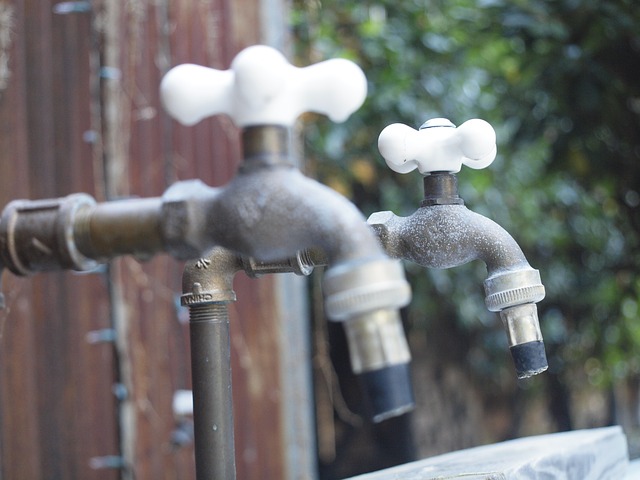Water hammer
Contents |
[edit] Introduction
Collins Complete Do-It-Yourself Manual was published in 1986. It was created for William Collins Sons & Co. Ltd. by Jackson Day and conceived by Jackson Day Jennings Ltd.
It defines the term water hammer as “a vibration in plumbing pipework produced by fluctuating water pressure.”
Water hammer is also known as fluid hammer or hydraulic shock.
[edit] History
One of the earliest recorded mentions of water hammer was in the 1st century BC. The occurrence is described by Vitruvius Pollio (born c. 80–70 BC, died after c. 15 BC) - often considered the first recognisable architect and known as a great Roman writer, engineer and builder. Amongst his accomplishments, Vitruvius documented the phenomenon - and proposed a resolution through the construction of cavities known as ‘venters’ - in his description of the pipes and tubes of the Roman public water supply.
The action created by water hammers was used in the development of a device known as a pulsation engine. Constructed in 1772 by the English clockmaker and scientist, John Whitehurst, the pulsation engine was the precursor to the hydraulic ram, or hydram, which used hydropower to pump water.
The hydraulic ram and the action of water hammers was used in 1796 by the French inventor Joseph Michel Montgolfier (1740–1810). Perhaps better known as the inventor of the Montgolfière-style hot air balloon (along with his brother, Jacques-Étienne Montgolfier), Montgolfier explored the idea of the pulsation engine and improved upon it to create the first self-acting ram pump. The Mongolfiers harnessed the ram pump to run their paper mill and refine a process to manufacture transparent paper.
It wasn’t until 1898 that the idea of water hammers was more formally explored in relation to civil engineering - first by the Russian, Nikolay Yegorovich Zhukovsky and the American, Joseph Palmer Frizell. In 1902, it was investigated again by the Italian engineer Lorenzo Allievi.
[edit] Causes
In certain situations, water hammers can be created when the flow of water is cut off from an appliance (such as a washing machine or dishwasher) or fixture (such as a toilet or shower). When the water flow resumes, it may be accompanied by a loud noise sometimes accompanied by a shudder - which may repeat several times or may happen just once. These actions indicate the transmission of a shock wave that travels back and forth.
Water hammers occur most frequently in older pipes. The shock wave associated with them may trigger the release of high pressure steam which can be dangerous - or even deadly. Their release can also create property damage if they rupture or cause pipes to collapse.
[edit] Preventing water hammers
It is sometimes possible to fix water hammers in a home without having to call in a professional plumber. The simplest method is to secure loose pipes, but if this doesn’t resolve the issue, additional methods - which may require a greater level of skill - can be attempted. These include:
- Installing an air chamber.
- Installing mechanical water shock arrestors or a hydropneumatic device known as a water hammer arrestor.
- Installing a water pressure regulator.
- Lowering fluid velocities.
- Fitting slowly closing, quiet valves or installing non-slam check valves.
[edit] Related articles on Designing Buildings
Featured articles and news
Delivering for tenants; National Retrofit Hub
New report offers recommendations to strengthen energy efficiency standards to protect private renters.
Government consultations for the summer of 2025
A year of Labour, past and present consultations on the environment, the built environment, training and tax.
CMA competitiveness probe of major housing developers
100 million affordable housing contributions committed with further consultation published.
Homes England supports Greencore Homes
42 new build affordable sustainable homes in Oxfordshire.
Zero carbon social housing: unlocking brownfield potential
Seven ZEDpod strategies for brownfield housing success.
CIOB report; a blueprint for SDGs and the built environment
Pairing the Sustainable Development Goals with projects.
Types, tests, standards and fires relating to external cladding
Brief descriptions with an extensive list of fires for review.
Latest Build UK Building Safety Regime explainer published
Key elements in one short, now updated document.
UKGBC launch the UK Climate Resilience Roadmap
First guidance of its kind on direct climate impacts for the built environment and how it can adapt.
CLC Health, Safety and Wellbeing Strategy 2025
Launched by the Minister for Industry to look at fatalities on site, improving mental health and other issues.
One of the most impressive Victorian architects. Book review.
Common Assessment Standard now with building safety
New CAS update now includes mandatory building safety questions.
RTPI leader to become new CIOB Chief Executive Officer
Dr Victoria Hills MRTPI, FICE to take over after Caroline Gumble’s departure.
Social and affordable housing, a long term plan for delivery
The “Delivering a Decade of Renewal for Social and Affordable Housing” strategy sets out future path.
A change to adoptive architecture
Effects of global weather warming on architectural detailing, material choice and human interaction.
The proposed publicly owned and backed subsidiary of Homes England, to facilitate new homes.
How big is the problem and what can we do to mitigate the effects?
Overheating guidance and tools for building designers
A number of cool guides to help with the heat.
The UK's Modern Industrial Strategy: A 10 year plan
Previous consultation criticism, current key elements and general support with some persisting reservations.
Building Safety Regulator reforms
New roles, new staff and a new fast track service pave the way for a single construction regulator.


























